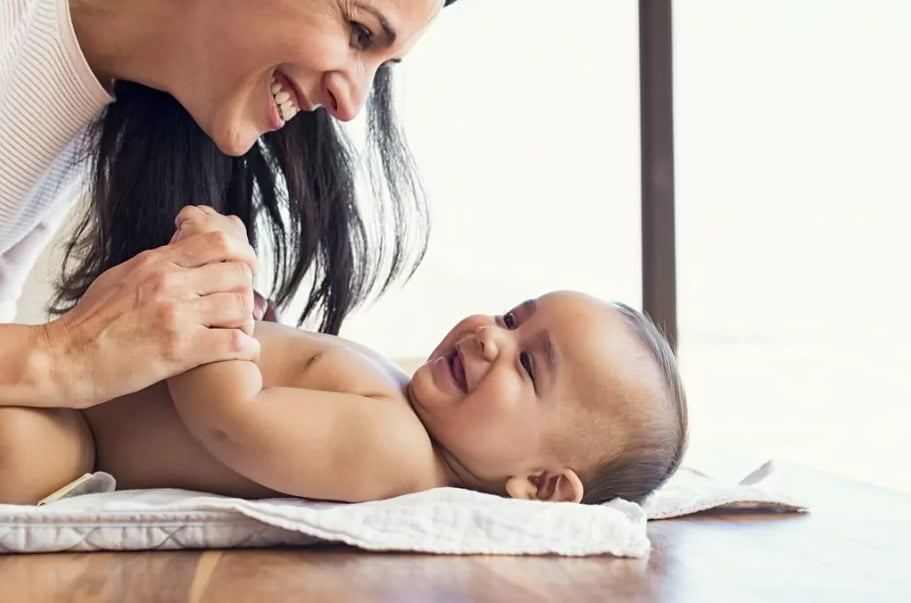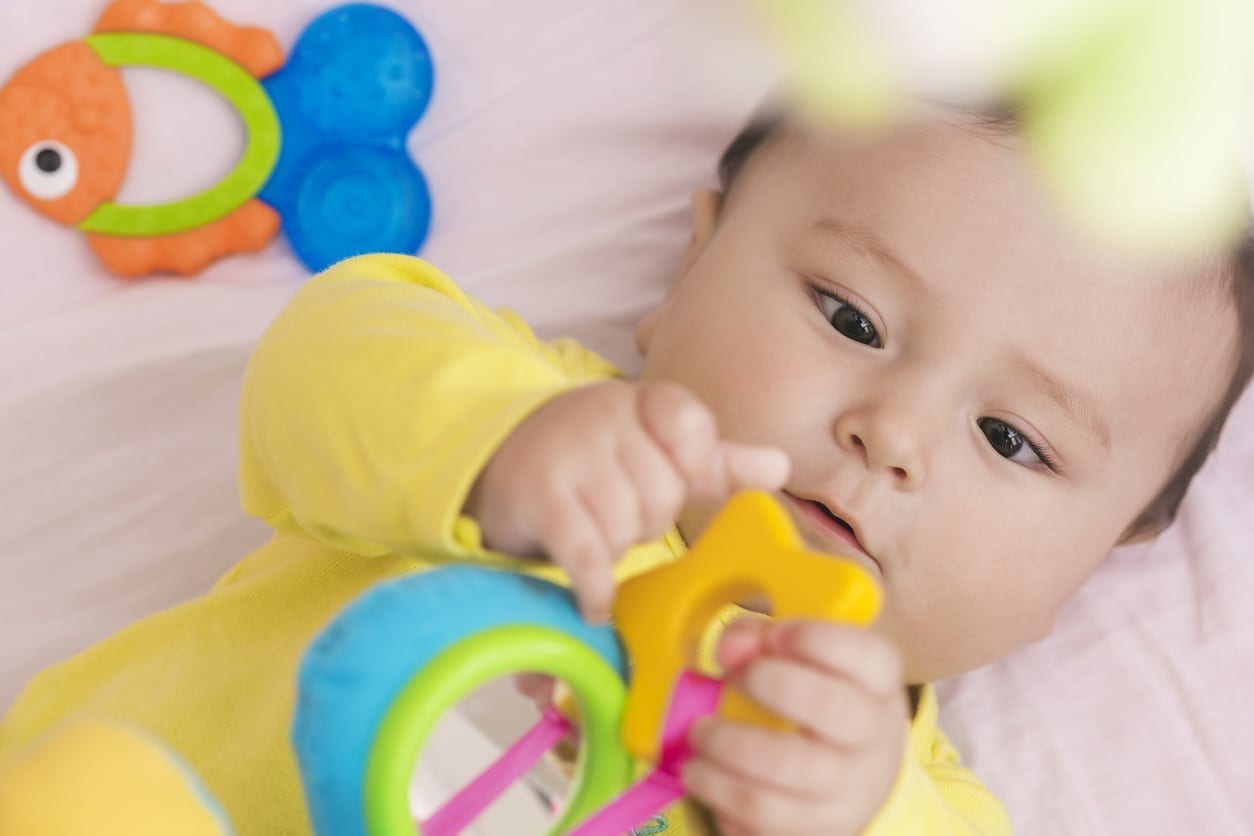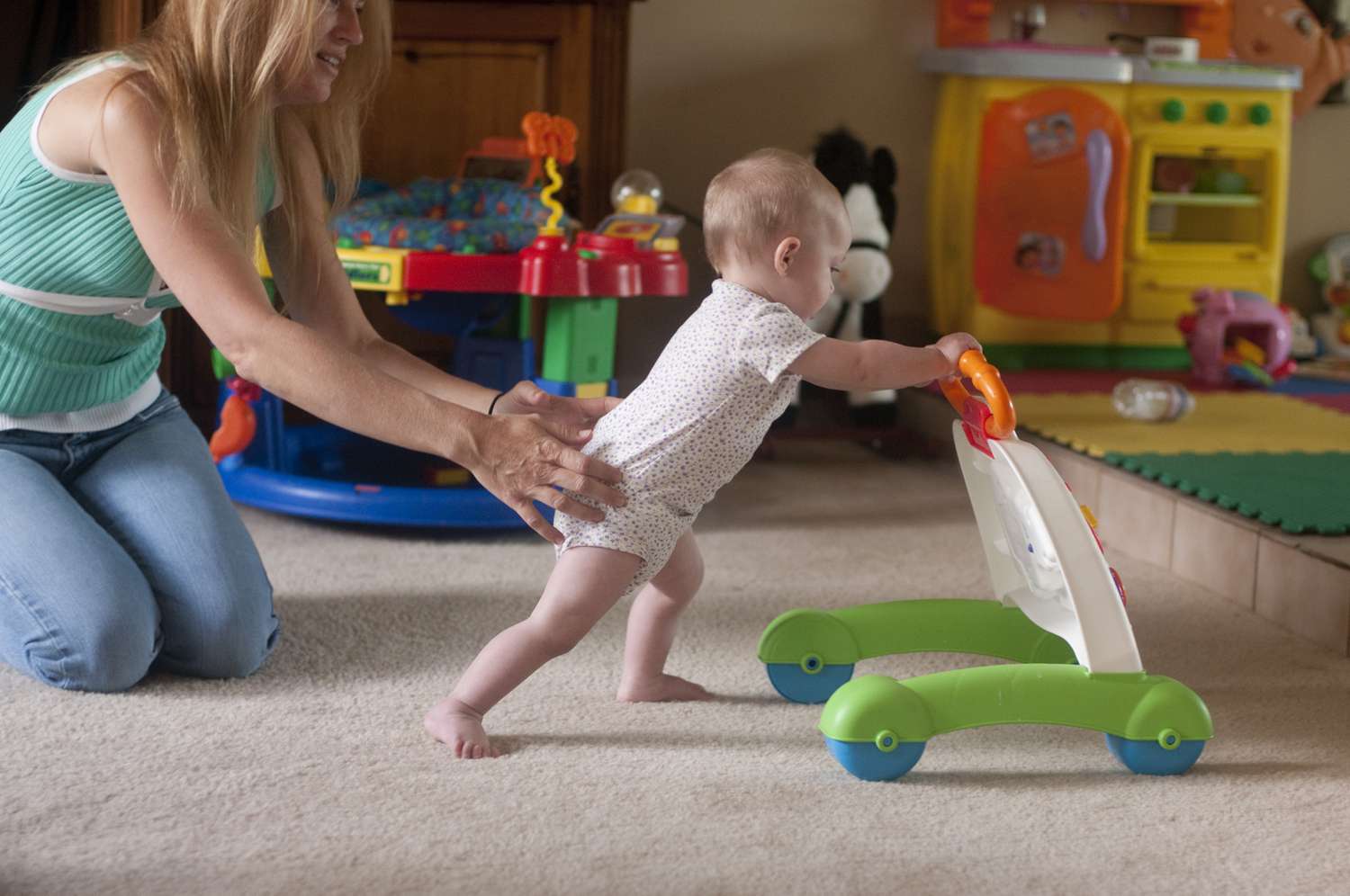
The first three months of your baby’s life are filled with wonder, as you nurture your baby’s growth through meaningful sensory experiences. Understanding the importance of visual, auditory and tactile exploration lays a strong foundation for future development. This comprehensive guide will explain engaging activities and the best development-boosting toys to fill your newborn’s world with joyful discovery.
The Power of High Contrast for Developing Vision
In the early weeks, your baby’s vision is still fuzzy, but their eyes are immediately drawn to high contrast shapes and patterns. Black and white mobiles with clean lines are ideal for securing their attention and encouraging visual tracking skills. Slowly moving a patterned cloth or laser light in different directions helps strengthen eye muscles and peripheral vision. Studies show face gazing is crucial at this age, so maximize close contact, making eye contact, smiling and sticking out your tongue. High contrast pictures and colorful cards held at 10-15 cm distance provoke interest and build their visual vocabulary.
Recommended Toys:
- Black and white baby play gym with dangling shapes
- Crib mobiles and picture cards with high contrast patterns
- Soft patterned ball with face images for tracking
- Baby-safe mirror for eye contact and self-discovery
Benefits:
- Strengthens eye focus and peripheral vision
- Builds visual interest and recognition
- Promotes visual tracking skills
- Stimulates vision development
Fostering Auditory Development through Meaningful Sounds
Exposing your newborn to comforting sounds creates positive associations and nurtures auditory development. Try different white noise machines, nature recordings and lullabies to find their preferences. Singing gentle nursery rhymes introduces rhyming patterns that aid phonetic awareness. Read age-appropriate books with rhythm and expression to make the experience engaging. Incorporate music into daily activities like bath time, play time and bedtime routines. Their sense of hearing is already well developed, so use your voice as a soothing presence.
Recommended Toys:
- Soothing sound machines and baby mobiles with music
- Brightly colored soft books with rhymes
- Rattles and toys with sounds at different pitches
- Soft fabric books with crinkly pages and animal sounds
Benefits:
- Builds auditory discrimination and early language skills
- Develops familiarity with the sound of your voice
- Introduces rhythm through rhyming books and singing
- Encourages sound connection with meaning
The Power of Touch for Growth and Bonding
Your gentle loving touch conveys warmth and comfort better than anything else. Hold your baby close, let them feel your heartbeat and find peace in your arms. Place them skin-to-skin for that powerful nurturing contact.
Use soft fabric toys and introduce new textures – satin trim on their crib, fleece blankets, cotton clothes. Create a multi-sensory corner with touch boards. Secure toys with contrasting textures like rubber, textured rings, plush toys, and rattles of different materials. Allow supervised grasping and exploration.
Recommended Toys:
- Soft stuffed animals and touch boards
- Ribbon tags, cloth books, and rubber teether toys
- Rattles and links with textures to grip
- Plush balls and toys with varied surfaces
- Baby play gym with dangling toys to bat at
Benefits:
- Builds tactile development through varied sensations
- Strengthens fine motor skills through grasping activities
- Reinforces eye-hand coordination
- Fosters sensory learning and curiosity
- Promotes bonding through loving touch
Tummy Time Playbook: 0-3 Months
Tummy time play strengthens neck, arm and trunk muscles crucial for hitting physical milestones like lifting their head, rolling over, sitting up. Lay your baby on their tummy when awake and supervised. Begin with 2-3 minutes, increase gradually. Fold a blanket under chest and arms for support.
Lie opposite them for soothing interaction. Place a mirror to motivate lifting their head. Hang stimulating toys at eye level just out of reach. Rotate colorful mobiles on the mat to capture their attention. Play music to keep them engaged.
Cradle their chin and help lift their head if needed. Massage gently to relax muscles. Tuck knees under chest to get into crawling position. Prop arms forward and encourage pushing up motions. Praise verbally on accomplishing mini-milestones during play. Make it an interactive bonding ritual.
Recommended Toys:
- Baby play gym mat and soft blankets
- Crib mobiles with music and dancing images
- Bright, textured toys just beyond their reach
- Baby-safe tummy time support roll
- Tummy time mirror for motivation
Benefits:
- Strengthens neck, back, and arm muscles
- Builds motor skills for rolling over, sitting up
- Allows exploration of new perspectives
- Visual tracking of mobiles and toys
- Fosters caregiver bonding during play
Enriching Daily Routines 0-3 Months
Integrating play into daily routines maximizes sensory learning. During diaper changes chat, sing and show toys for visual tracking. Stack colorful cups while bottle feeding. Whistle a happy tune and point to objects while strolling. Attach toys that contrast with the pram ceiling.
Let them feel different blanket fabrics and watch mobiles during bedtime prep. At bath time, make splashing sounds and let them grasp the water. Draw an animal with the foam and name it. Massage limbs with colored textures. Talk to them constantly through all activities.
Respond quickly to cues like turning away when overstimulated. Vary positions during play – prop upright on your lap, lay on their back or side. Go outdoors often for fresh air and natural sights. Capture precious moments with photos, videos and daily journals. Cherish this special period and your role in nurturing their development.
Recommended Toys:
- Crib mobiles with music and soft toys
- Rattles, cups and toys for stroller and bath time
- Crinkly and squeaky rubber bath toys
- Patterned and high-contrast diaper change mats
- Soft photo books and baby journals
Benefits:
- Boosts learning through multisensory play
- Incorporates games and activities into care routines
- Allows consistent exposure to stimulating toys
- Strengthens caregiver bonding during special moments
- Creates lasting memories through photos and journals
Vision Milestones 0-3 Months: What to Expect
Let’s outline the major visual milestones you can expect in the first 3 months:
0-1 month: Sees high contrast patterns up to 8” away. Eyes wander aimlessly. Prefers black/white shapes over coloured shapes. Eyes still crossed at times.
1-2 months: Eyes align and focus better on objects and faces. Recognizes faces at 10-12 inches range. Eyes track moving objects smoothly. Distinguishes primary colors like red, yellow. Attempts to grab objects within view.
2-3 months: Visual acuity improves, recognizes faces from 2 feet away. Identifies colours and contrasts easily. Develops full peripheral (side) vision. Eyes drawn to finer details and patterns. Visually guides reaching for objects.
While each baby develops uniquely, this timeline conveys the rapid visual changes. Offering stimulating sights facilitates hitting these milestones. Consult your pediatrician if progress seems delayed. With loving support, their vision will continue blossoming.
Hearing Milestones 0-3 Months: What to Expect
Let’s explore key auditory milestones you can anticipate in the first 3 months:
0-1 month: Prefers high pitch tones and human voice over other sounds. Startled by loud noises. Listens longer to music over speech. Cries differ for pain and hunger.
1-2 months: Settles down hearing your voice. Pays attention to soft sounds, jingling toys. Begins to mimic some sounds. Enjoys listening to singing and music.
2-3 months: Turns head searching for sounds. Begins giggling and making joyful sounds. Vocalizes louder squeals, grunts. Reacts differently to angry and friendly tones. Begins babbling consonant sounds like “ma-ma”.
While newborns hear well at birth, their discrimination develops dramatically by 3 months. Note cooing, babbling, and response to sounds. Call the doctor if you have hearing concerns. With affectionate interaction, you can nurture their auditory aptitude.
Touch Milestones 0-3 Months: What to Expect
Your baby’s sense of touch keeps blossoming. Here are touch milestones you can expect the first 3 months:
0-1 month: Roots and turns mouth toward touch on cheek. Grasps objects placed in palm. Soothed when gently cuddled. Raises arms and legs when excited or upset.
1-2 months: Opens and shuts hands repeatedly. Plays with own hands and feet. Touches own body parts curiously. Starts holding objects briefly. Uses hand to swipe at dangling toys.
2-3 months: Uses hands actively – batting, swiping, shaking toys. Transfers objects between hands. Touches objects then mouths them. Splashes water playfully. Self-soothes by sucking fist or toys.
Nurture fine motor development with supervised grasping, reaching activities. Provide touch stimulation through varying textures. Respond to signals like clenched fists or fingers splayed when overstimulated. Your loving caresses comfort better than anything!
The Power of Reading Aloud 0-3 Months
Reading aloud builds vocabulary, literacy and a loving bond fast, even with newborns. Babies recognize and prefer a parent’s voice within days. Early reading fosters security and aids language development.
Board books with bold patterns and rhyming stanzas are ideal. Contrasting colors and clear animal imagery engages their vision. Point to the pictures and name objects. Emphasize rhyming words through repetition. Act out animal sounds using dramatic voices.
Read slowly to allow time for their eyes to follow and process. Don’t expect reactions initially. Focus on the experience rather than finishing the book. Follow their cues – pause when distracted, resume when re-engaged.
Even when they don’t understand stories, hearing language structures their auditory circuitry. The comfortable lap snuggles and oversized pictures make books a warm sensory adventure. Reading together builds vocabulary and nurtures an early lifelong love of books.
Recommended Books:
- Black and white board books with patterns
- Cloth and soft fabric books with crinkly pages
- Picture books with rhyming stanzas
- Short story collections on themes like animals, toys, vehicles
- Interactive books with flaps, touch elements, and sounds
Benefits:
- Enhances parent-child bonding
- Builds listening and language skills
- Stimulates visual tracking
- Develops literacy foundation
- Instills early love of books and reading
Mastering Milestones: Tips and Resources
Here are helpful tips to encourage your baby’s development the first 3 months:
- Alternate high contrast toys and colorful pictures optimally 8 to 12 inches from face to avoid visual stress.
- Allow grasps and exploration of safe, textured toys to build motor skills.
- Play music or white noise to mask abrupt household sounds and create a soothing soundscape.
- Chat, sing and read aloud to increase auditory exposure and language familiarity.
- Incorporate tummy time into a consistent daily play routine for muscle strengthening.
- Respond to coos and babbles to build early two-way communication.
- Introduce new experiences gradually while paying attention to signals of overstimulation.
- Observe cues closely and adjust activities based on engagement levels and mood.
- Consult your pediatrician if you have concerns or feel they are not meeting milestones.
With attentive nurturing, your baby will thrive. Treasure these precious moments in their sensory learning journey!






